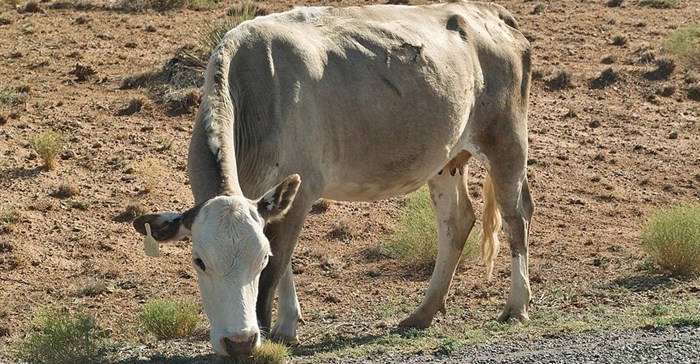
Agricultural economists are of the view that it will get much worse during 2016 and that the negative knock-on effects will not only impact and input suppliers as well as the rest of the economy, for the first time will feel the effect of widespread drought, for a number of years to come.
Summer rains are already too late for production areas to plant row crops like maize and soybean. Yields will be effect and pushed down below average yields. This will lead to maize being imported, an expensive practice with the continuous depreciation of the Rand against the Dollar. Yellow and white maize prices have already increased and will likely remain high till early 2017.
The SA Sugar Cane association reports that sugar cane crushed by the mills fell to 17.7 million ton in 14/15 and expected to drop further in 2015/16. Income to sugar cane farmers dropped. Cane yields will remain depressed for the next 2-3 years. Sugar companies are running well below capacity. Exports of sugar are also declining.
Currently the potato market has an oversupply of potatoes, however due to recent heat waves, creating dry hot weather the quality of potatoes were affected.
Seed Potato producers can't sell their seed potatoes as there is very little demand from commercial potatoes producers to plant potatoes, a result of a lack of soil moisture and irrigation water.
Seed Potatoes are now given as animal feed in drought areas, resulting in huge financial losses to the particular seed potato producers. The effect of the lower demand for seed potatoes will be seen in next year's supply of seed potatoes, which will push up potato prices that have already increased.
Natural grazing is already lost which will result in insufficient grazing through the 2016-winter. Farmers are trying to keep core breeding herds alive, however, feed is limited/expensive due to the past three years of drought conditions. Farmers are slaughtering animals to free space on the farm and also preserve natural grazing.
The reduced new summer crop plantings will also lead to reduced fodder supply in the 2016-winter. This will have an impact on prices for live animals, which has already been reflected in the significant decrease in prices due to the oversupply of meat in the market as there are few buying appetite buyers and abattoirs are running at full capacity.
Animal diseases like Brucelose is currently being spread due to the movement of animals to areas where grazing is still available. The risk of new diseases spreading throughout the country is real, with grave consequences.
In the case of intensive livestock (chicken, eggs, pork and dairy) feed costs are approximately 60% of total production costs. Most producers are losing money and closure of production units is inevitable, while the surviving producers will have to increase product prices significantly to break even and survive during the next 2-3 years.
Feed and chicken company share prices are already showing significant decreases as the market discounts the risk of not making a profit in the future, due to current market conditions. The poultry industry fully expects volumes (bought by consumers) to decrease but are prepared to rather stay profitable and survive on smaller volumes to remain sustainable.
Input suppliers to agriculture will have significantly reduced sales, leaving them with unsold stock and heavy financial losses. Machinery sales are already down for 2015 and will reduce further in 2016.
Seed producing companies will receive unused seed back from farmers resulting in large unsold stock which will be unfit to be sold in the 2016/17 planting season.
Chemical companies (fertilizer/insecticides/chemicals) will have large unsold stock resulting in heavy financial losses and some of the stock will not be fit for the purpose two years later.
• Unemployment will increase throughout the country.
• Economic activity will be reduced severely, especially in rural areas. Hunger and crime will increase and we can expect another large movement of people into city areas.
• Economic multipliers indicate that a 1% drop in output in agriculture will lead to a 1,5% drop in output in the larger economy. In rural areas the multiplier is close to 4. We expect severe economic hardship in rural areas and de-population.
• Agriculture's labour multiplier is also much higher than the rest of the economy at 24,1 while the whole economy is calculated at 8. The result is that a decrease in agricultural output will shed much more labour, than what the case is in the rest of the economy.
It is not an overstatement or over dramatization of the current drought situation. The impact will be severe in rural areas, but it will rapidly escalate through the economy and directly into reduced consumer welfare/ /increase in undernourishment
*This is a summary of the report Implications of the lingering 2015 drought on the economy, agricultural markets, food processors, input suppliers and the consumer published on 11 December 2015. Read the full report here.